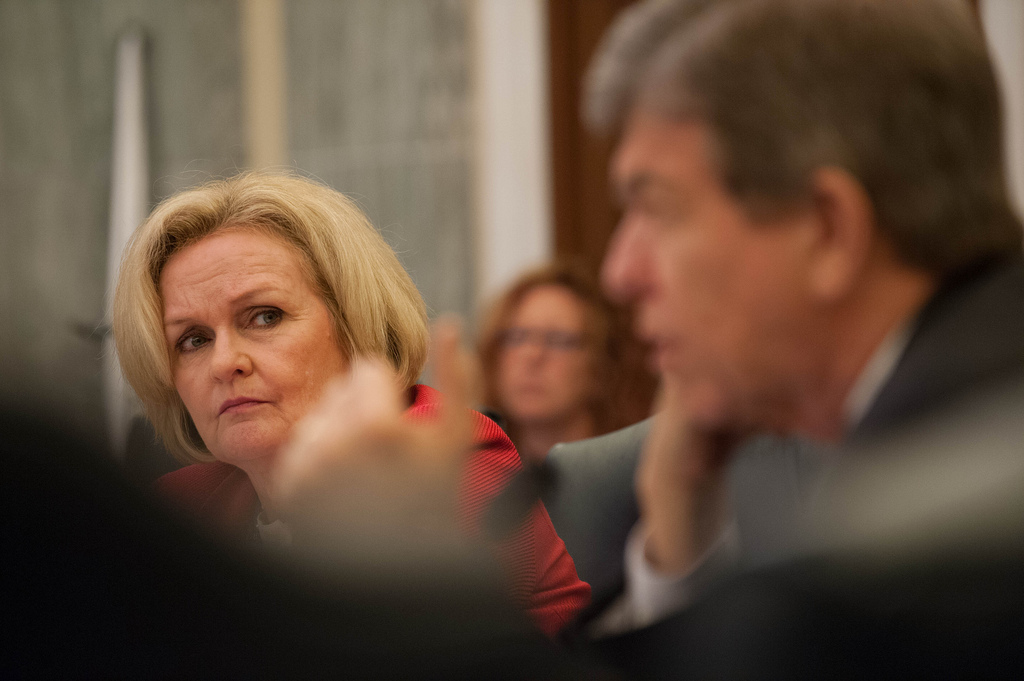
JEFFERSON CITY, Mo. — U.S. Sen. Roy Blunt is no fan of the idea of the federal government requiring officers in local law enforcement agencies to begin using body mounted cameras in order to receive additional federal funding.
Blunt — who made four stops on Monday visiting with law enforcement officials — questioned what problem would be solved if police officers were required to wear cameras.
“Do you need a body cam to have a Humvee that the federal government paid $500,000 for that you get as a surplus vehicle for $1,500?” he asked. “You don’t need a body cam for that.”
Blunt, a Republican, said the decision about whether an agency should purchase the cameras should be made locally.
“I think you need to look at the body cam program as to what the cost is, what that means, how you maintain all of that information and how long you maintain it,” he said.
The idea of tying additional federal funding for law enforcement to a requirement that police officers wear cameras was first proposed by Missouri’s other senator, Democrat Claire McCaskill. During an interview earlier this month, McCaskill said it is her belief that the requirement would benefit both the public and law enforcement.
“Everyone is filming things everywhere you go,” she said. “If you’re a police officer, you want the entire incident filmed. If just the end of the altercation is filmed, it may give a completely different tone or tenor than if you saw the entire episode that might have dealt with an individual or police officer. Besides that, it will help us catch criminals.”
The discussion over police tactics has emerged with a furor following actions taken by police in Ferguson, Missouri, during the protests surrounding the shooting of Michael Brown, an 18-year-old unarmed black man.
McCaskill, who chairs a Senate oversight committee, launched hearings this month into police tactics associated with three separate federal programs that disseminate surplus military equipment to local police departments, like the $400,000 military transport vehicle the Joplin Police Department received for free in April.
During his tour Monday, Blunt held private meetings with local law enforcement agencies in Kansas City, St. Joseph, Jefferson City and St. Louis. He said he asked about specific police tactics relating to the surplus military equipment — mainly the use of the large, armored vehicles that were visible on television screens and in newspaper photographs during the unrest in Ferguson.
Blunt, who shrugged off a question Monday about whether he thinks there is adequate training associated with the dispersion of these vehicles, said he generally supports the program as a way to help local police agencies protect communities. In one instance in Ferguson, he said, an armored vehicle was used to pick up an injured resident in an environment where an ambulance could not go.
Blunt said of the three armored vehicles used in Ferguson, “the best analogy of that is a Brinks truck — they’re defensive, not offensive.”
His point? The military is not giving police departments what most people would recognize as a tank. “There was no offensive capability there at all,” he said. Decisions about “offensive capability,” like the widely criticized police officers who mounted themselves on top of an armored truck with a high-powered rifle aimed at protesters, were made at the local level by police commanders in charge.
While McCaskill has been calling for body cams and looking at making training mandatory before distribution of the surplus military equipment, Blunt is taking a more local approach if departments should acquire these vehicles and when they should be used.
“You’re going to make a better decision when you make it close to where the problem is, the country is very different, just like our state is very different,” he said.
